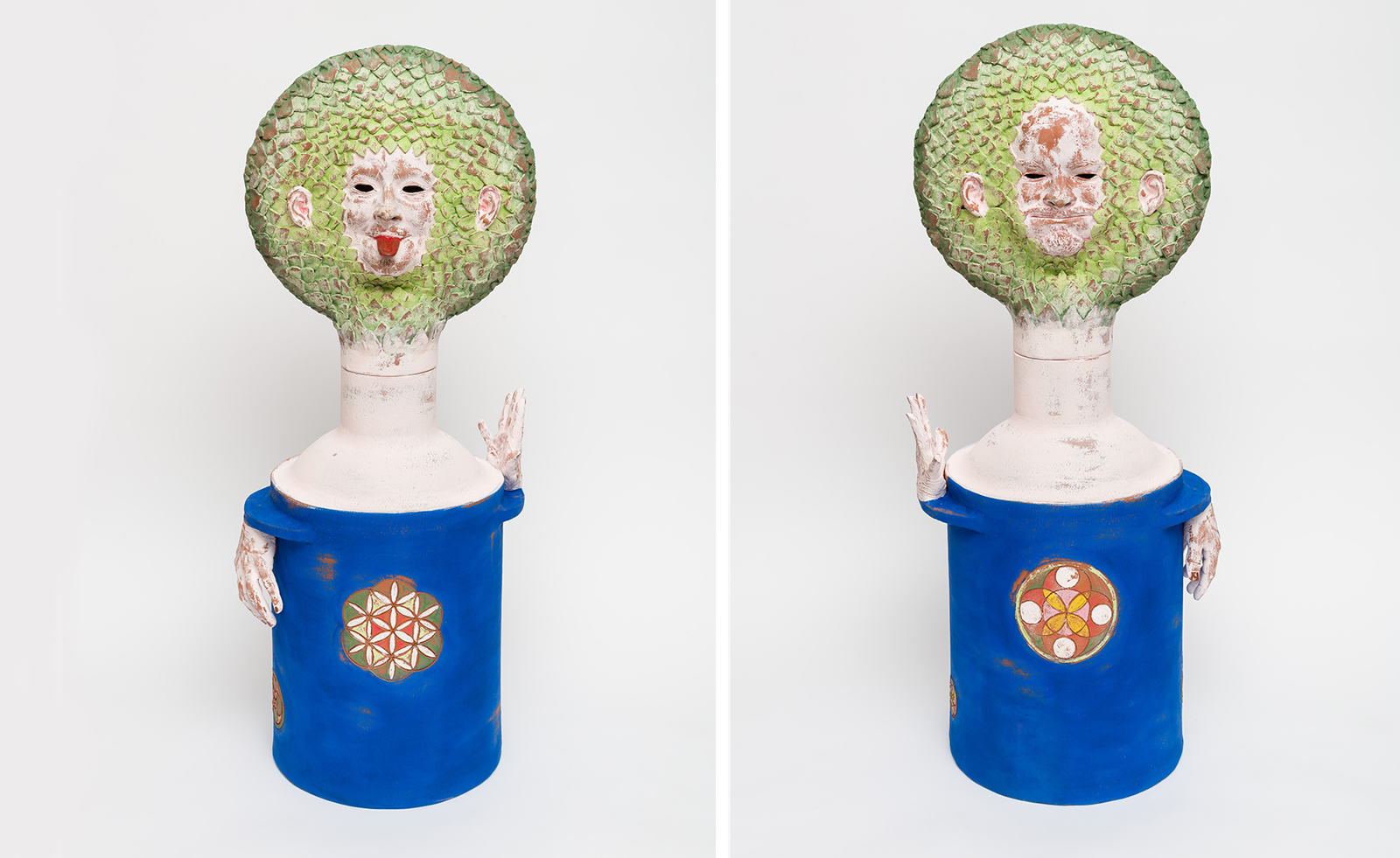
Ceramics and art have a companionship longer than most. The story began in the Palaeolithic period with a potent fusion of water, earth and creativity that has since evolved through many modes. Now, 21st-century ceramic artists are proving that the medium has as much potential for concept as function, lured in by its versatility, sensuality and role as a platform for provocation.
From artists upholding age-old techniques with a twist to those unearthing radical ways to push materials to their limits, explore our ultimate guide to ceramic artists: the trail-glazers, the mould-breakers and future-shapers on the cutting edge of clay.
Ceramic artists: a guide to the contemporary pioneers
Alfred Lowe
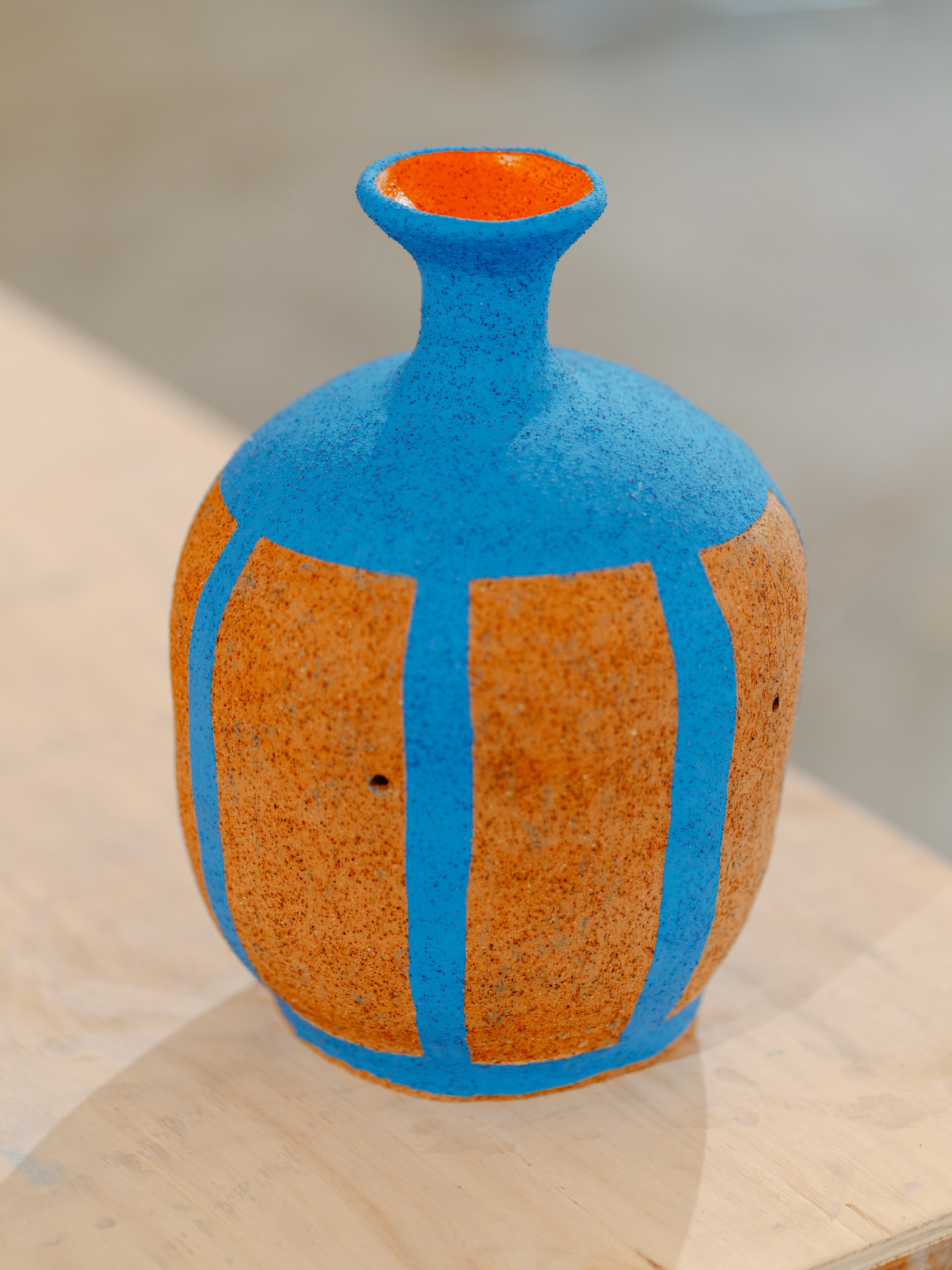
Alfred Lowe is one of our emerging designers for 2025. As an Arrernte person, growing up near Alice Springs in Australia, Lowe's ceramics are influenced by identity and landscape. Cocooning his work with the colours of his native country and environment, his work is a joyful expression of his experiences. In 2024, he was awarded the Shelley Simpson Ceramics Prize by the founder of Mud Australia.
Read our interview with Alfred Lowe
Jonathan Baldock
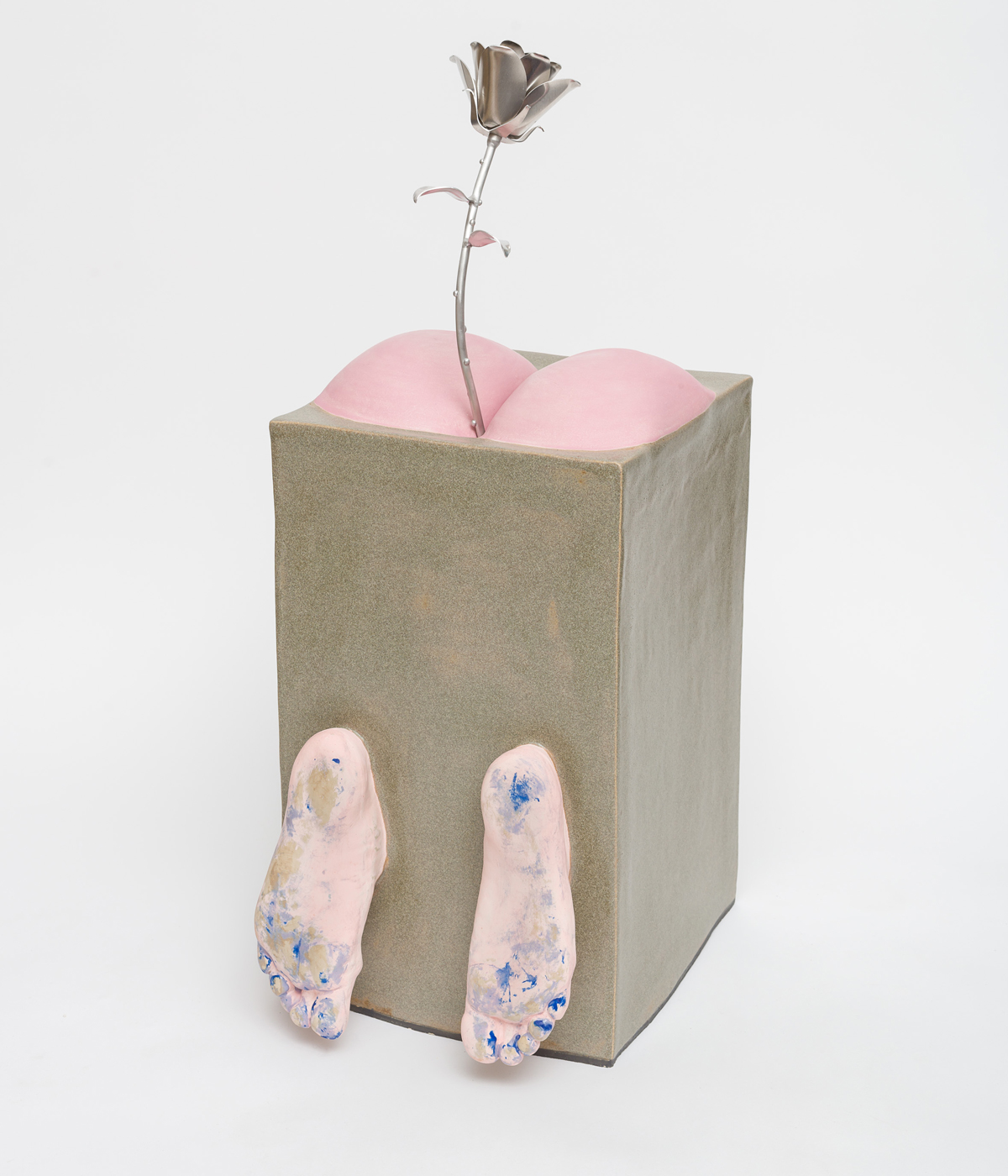
Jonathan Baldock's work is saturated with humour and wit, as well as an unsettling, macabre quality that channels his longstanding interest in myth and folklore. The British artist was partly drawn by the medieval architecture and carved wooden figures of nearby Wakefield Cathedral for his recent exhibition at Yorkshire Sculpture Park, but his creations are less about religious iconography than they are about what lies beneath. As some of the 500-year-old carved figures were concealed under folding seats, known as misericords, and thus hidden out of sight, those who made them had the freedom to carve what they liked, and their subject matter often relates more closely to nature or mythical beasts.
Inspired by the idea that their makers found pockets of joy in expressing themselves freely outside of the rules, Baldock riffed on these characters, creating large-scale textile sculptures that include a sphinx-like creature and a Green Man. As someone from a working-class background, he connects with the non-authoritarian voice of the craftsperson. As a queer person, he sees the misericords as objects that have survived the repressive ideals of history – they are subversive outsiders hiding in plain sight.
Writer: Anne Soward
Lindsey Mendick
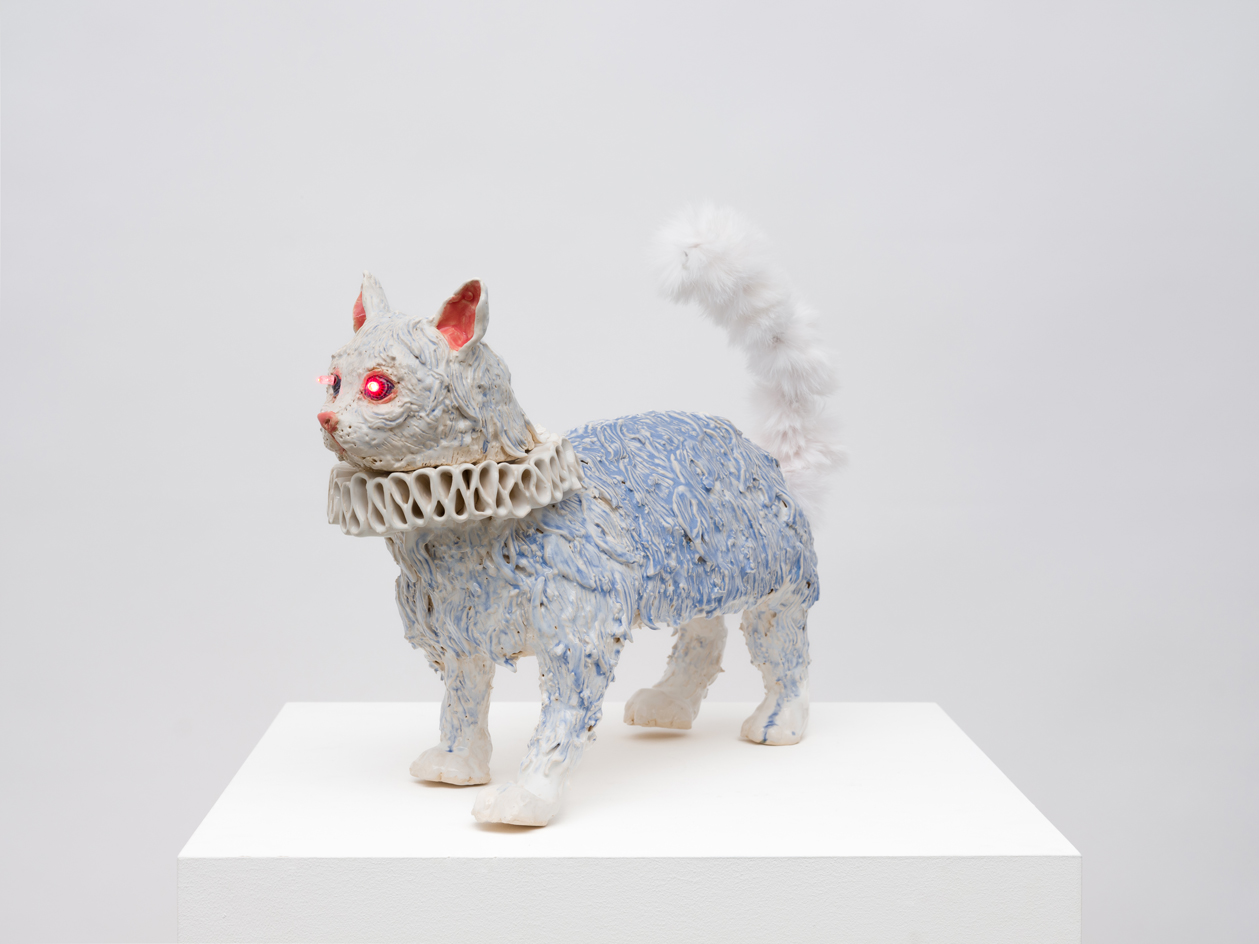
Lindsey Mendick’s ceramic art was talk of clay-based town in ‘Strange Clay’, Hayward Gallery’s landmark show of ceramic artists in 2022. There, Mendick staged an environment that conveyed the intensity of domestic cohabitation. It was an astonishing example of the artist’s ability to use clay not only as a medium but as theatre, complete with props, protagonists and plot. In the process of creating these worlds – layered with candid personal anecdotes, myth, and pop culture references – Mendick subverts clay’s connotations with decoration and function, instead using ceramic art as a narrative device - at once witty, grotesque and beautiful.
Writer: Harriet Lloyd-Smith
Maxwell Mustardo

Maxwell Mustardo’s ceramic art appears as though its origins are from another universe. This is clay, but not as we know it. Last year, the New Jersey-based artist staged his first solo show in New York at Culture Object. Titled ‘The Substance of Style’, the exhibition comprised ceramic vessels sprayed with bobbled matte fluorescent colours and iridescent colour-shifting PVC. It demonstrated Mustardo’s knack for fusing the tradition of ceramics with an otherworldly approach that is simultaneously playful, uncanny and hyper-contemporary.
Writer: Harriet Lloyd-Smith
Sin-Ying Ho

In her deft cut-and-paste approach, Sin-Ying (Cassandra) Ho fuses together fragments of East and West. Self-described as a ‘global sapien’, Ho creates work reflective of the multicultural cities she’s inhabited, including New York, Toronto, her birthplace of Hong Kong, and Jingdezhen where she lives and works. Ho’s cross-cultural ceramic art is an amalgam of life experiences and observations; European and Chinese elements, decorative motifs and images from past and present collide to create concepts that are fundamentally contemporary.
Writer: Harriet Lloyd-Smith
Jonathan Baldock
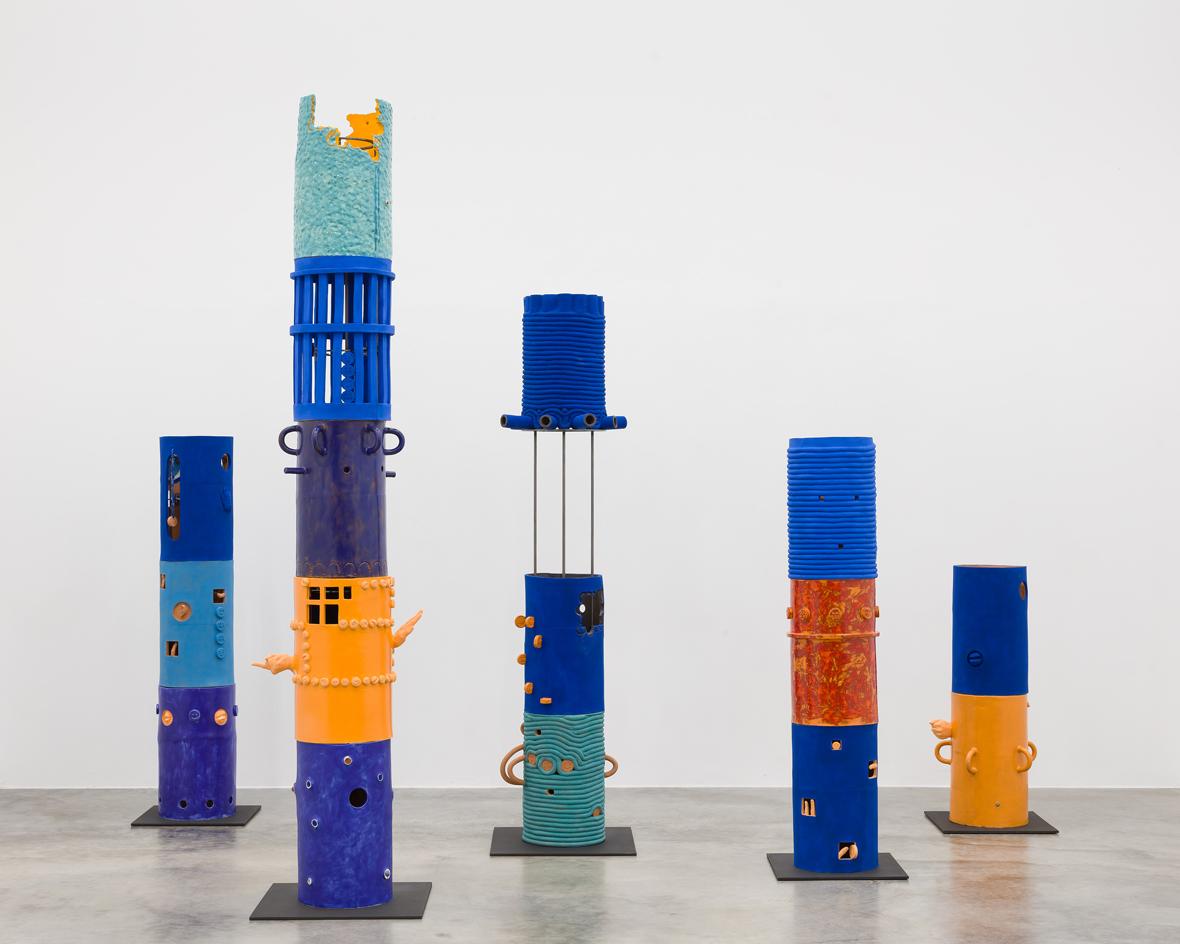
Jonathan Baldock’s ingenious recipe of wit, grotesqueness, empowerment, mortality, and surrealism is as much ceramic art as theatre. The British artist’s multidisciplinary practice often merges ceramics, painting, sound, metal, textiles and performance to stretch the possibilities of his materials. Baldock – who recently created a striking window display for the Renzo Piano-designed Hermès Flagship store in Tokyo – is best known for incorporating biological forms into his work: disembodied ears, beckoning fingers, or contorted hands pushing and punching, which explore childhood fears, adult desires and the space occupied by the human body. As the artist has said, ‘All bodies are good bodies’.
Writer: Harriet Lloyd-Smith
Shawanda Corbett
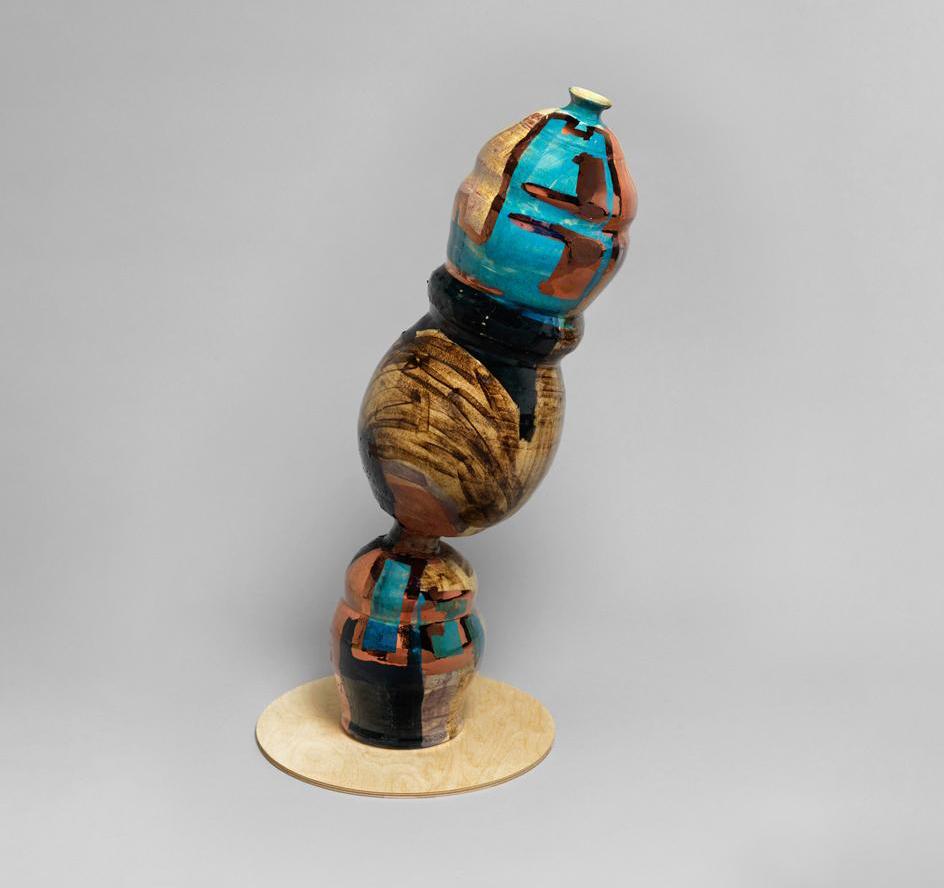
American multidisciplinary artist Shawanda Corbett is breaking the mould of ceramic art. Her performative pottery – incorporating dance, music and poetry – is shaped by global histories and theories around a ‘complete body’. Corbett is a self-described ‘cyborg’ artist, drawing on Donna Haraway’s Cyborg Manifesto (1985). ‘I wanted to use [the book] but with my perspective: a Black woman, queer, disabled and all these other social identities that I have, whether decided or decided for me,’ the Oxford-based artist told us in an interview. Corbett’s ceramic works often comprise totemic, anthropomorphic vessels of different heights, shapes and glazes, their vibrant, glossy surfaces scored with traces of the music Corbett listens to as she works.
Writer: Harriet Lloyd-Smith
Fernando Casasempere

When Fernando Casasempere moved to London in 1997, he brought with him over twelve tonnes of his own mixtures of Chilean clay. The ceramic artist has always retained deep connections to the landscape of his native country, through which he confronts urgent global ecological and social concerns with links to the sensibilities of the Land Art movement. His abstract work blends clay with industrial matter, notably waste materials from copper mining (a principal export of Chile) and draws on classical and modern cultural forms such as Pre-Columbian art and Latin American architecture.
Writer: Harriet Lloyd-Smith
Martha Freud
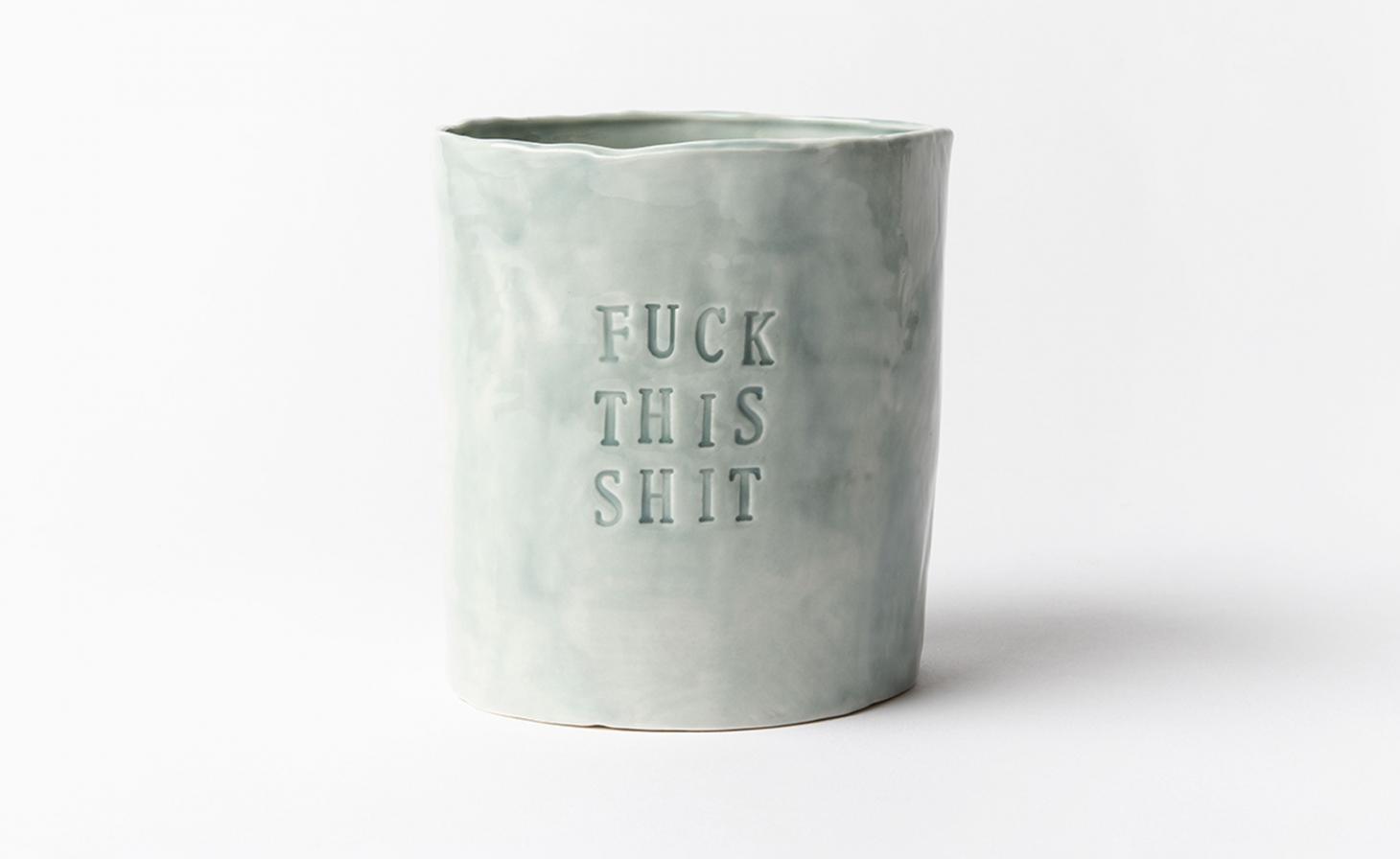
The work of British ceramic artist Martha Freud is a bold fusion of wit, cultural critique, tongue-in-cheek wordplay and philosophical reflection. It was following a degree in furniture and product design that Freud discovered an affinity with ceramics, a moment she describes as ‘love at first sight’. In recent years, Freud has been focussing her energy on motherhood, an experience she has is now channelling into something of an art renaissance. ‘Mixed Messages’ at Nonemore Gallery, London, is Freud’s first solo show in more than a decade and features new works that blend technology and tradition. This includes delicate porcelain tableware and candles which feature witty slogans, life lessons and statements of empowerment: ‘Well, Well, Well If It Isn't The Consequences Of My Own Actions’, ‘Fuck This Shit’ and ‘My Body My Labels’ among them. It takes a certain vision to achieve an impactful balance of profanity, profundity, and poetry, but Martha Freud might have just cracked it.
Writer: Harriet Lloyd-Smith
King Houndekpinkou
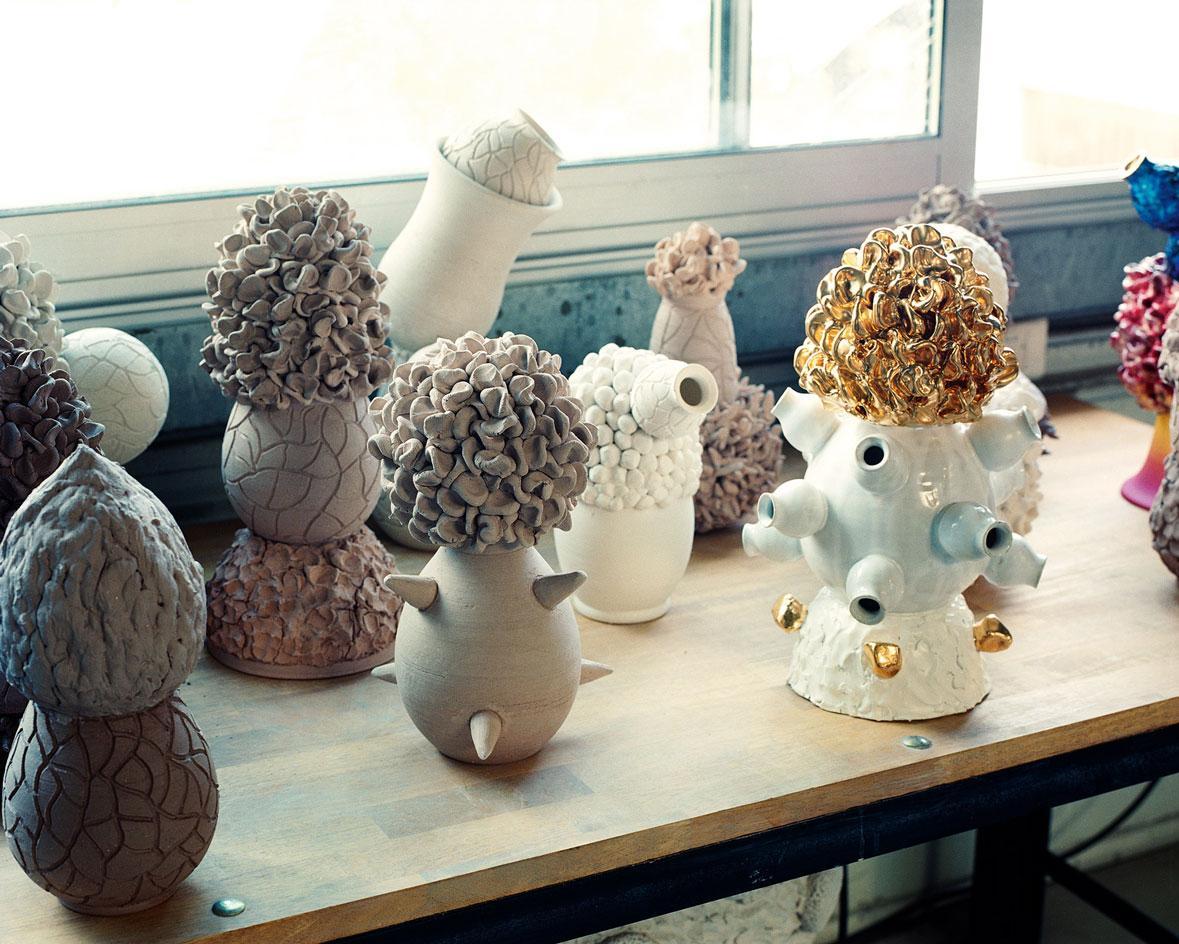
King Houndekpinkou’s otherworldly ceramic art blends ancestral pottery traditions with space-age video game aesthetics. The Paris-based artist, of Beninese origin, fuses seemingly disparate influences – from Japanese craft, African Voodoo and pop culture to form sculptures bursting with bold colour, playful spikes and cracked surfaces. As he told writer Minako Norimatsu in a profile for our September 2021 issue, ‘It can take a combination of hundreds of powders to obtain a particular colour or texture. Sometimes I rework a piece that is ostensibly finished, applying another layer of glaze and firing it again. Then a new piece is born!’
Writer: Harriet Lloyd-Smith
Brie Ruais
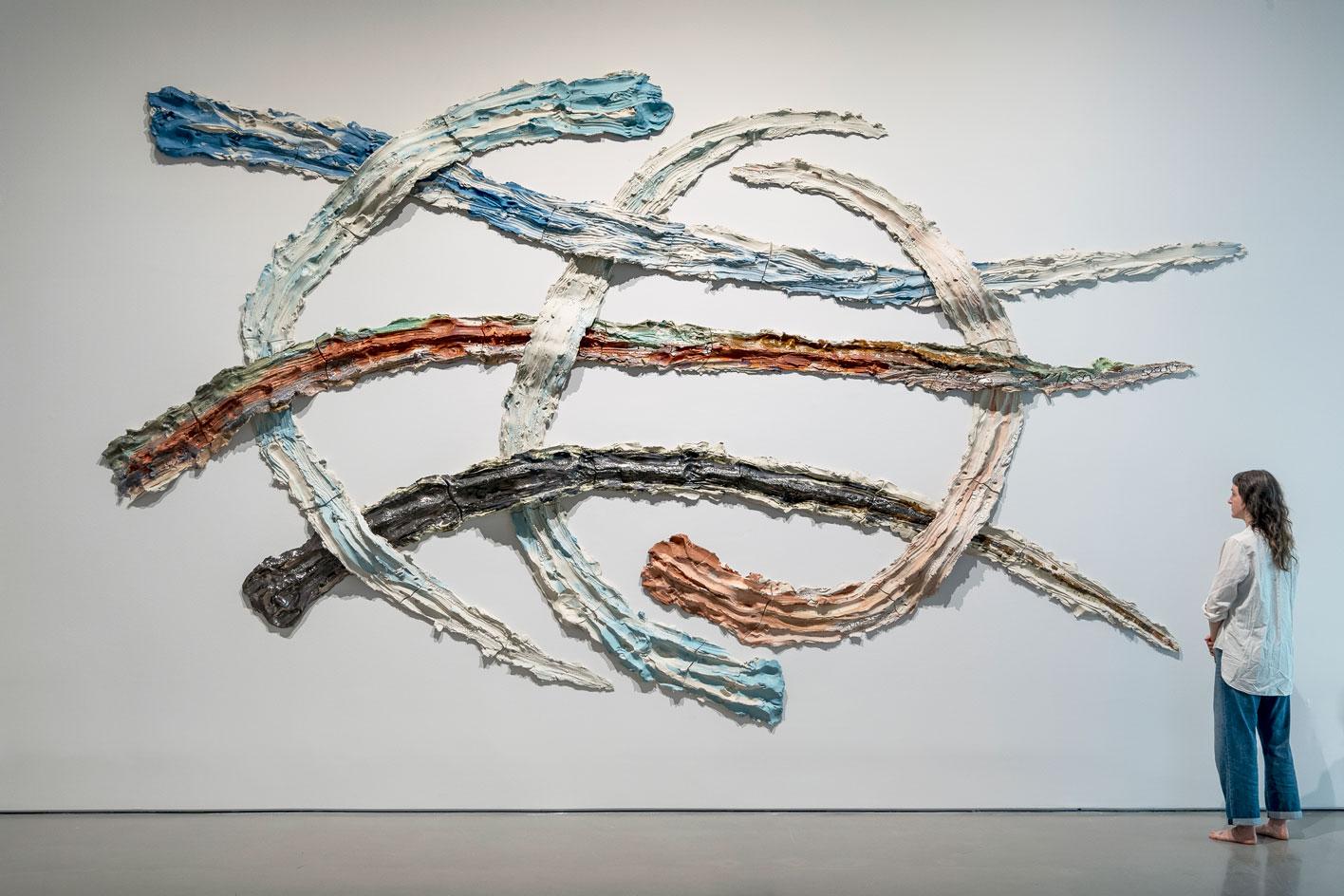
Brooklyn-based Brie Ruais uses one primary tool to fashion her dynamic clay pieces: her own body. Each of her sculptures is made with the equivalent of her body weight in clay, resulting in pieces that uncannily mirror human scale. Each gouge, scrape and fold is evidence of raw physical engagement with her material, reminiscent of work by Ana Mendieta and Lynda Bengalis. Ruais’ often creates alone in the desolate desert terrain of Nevada's Great Basin, with no Wi-Fi or phone service. The intensity of solitude, and the charged intimacy with her material, as she rolls, pushes and pulls her body across it, results in works that blur sculpture and performance.
Writer: Harriet Lloyd-Smith
Ron Nagle
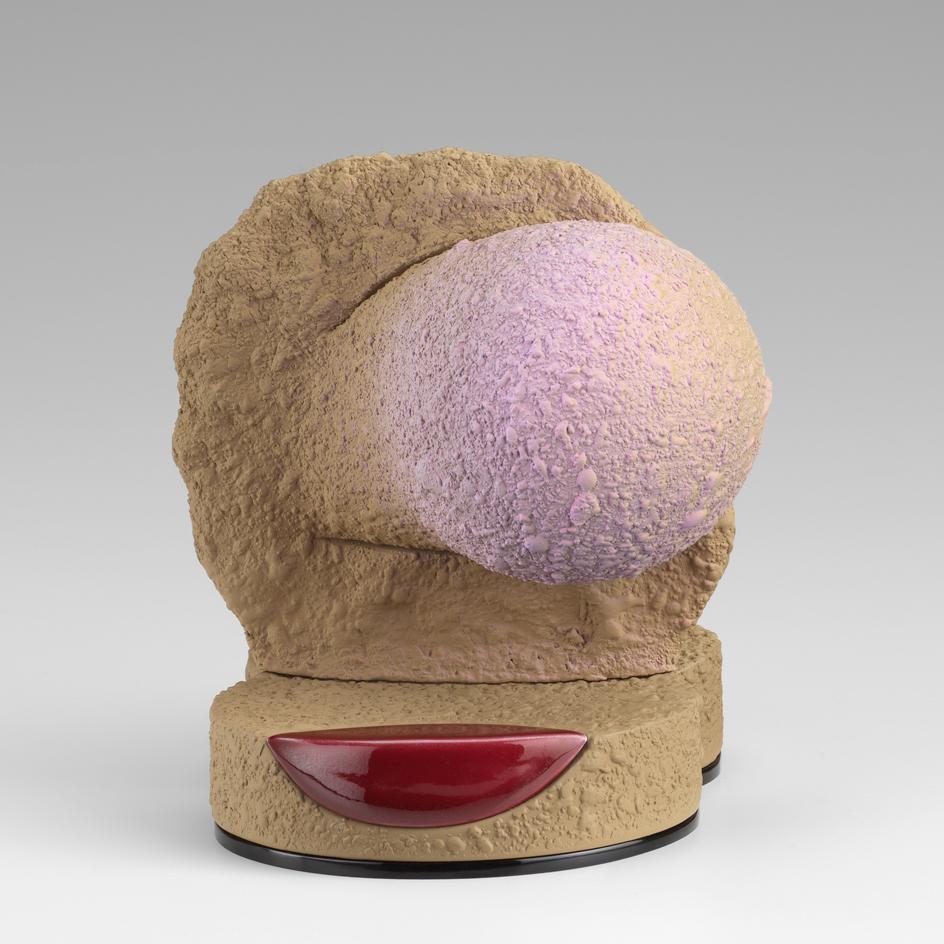
It’s a rare trait in the arts, but acclaimed American ceramicist and prolific musician Ron Nagle has managed to master two very distinctive mediums with singular zest, conviction and unpredictability. Clay began as a rebellion for Nagle, both against his parents’ ‘closed-minded’ view of suitable vocations, and the conventional ceramic applications that ruled 1950s California. Gaining prominence in his 20s, he joined forces with other like-minded artists, such as Peter Voulkos and Ken Price, and soon found his rhythm. The results were small-scale, huge impact pieces that the artist has been perfecting for the last 60 years. An amalgam of hyper-polished and rugged surfaces combined with spicy, saturated hues, his works are imbued with the legacies of California: pop culture, the Finish Fetish movement and its sun-soaked vernacular.
Writer: Harriet Lloyd-Smith
Zemer Peled
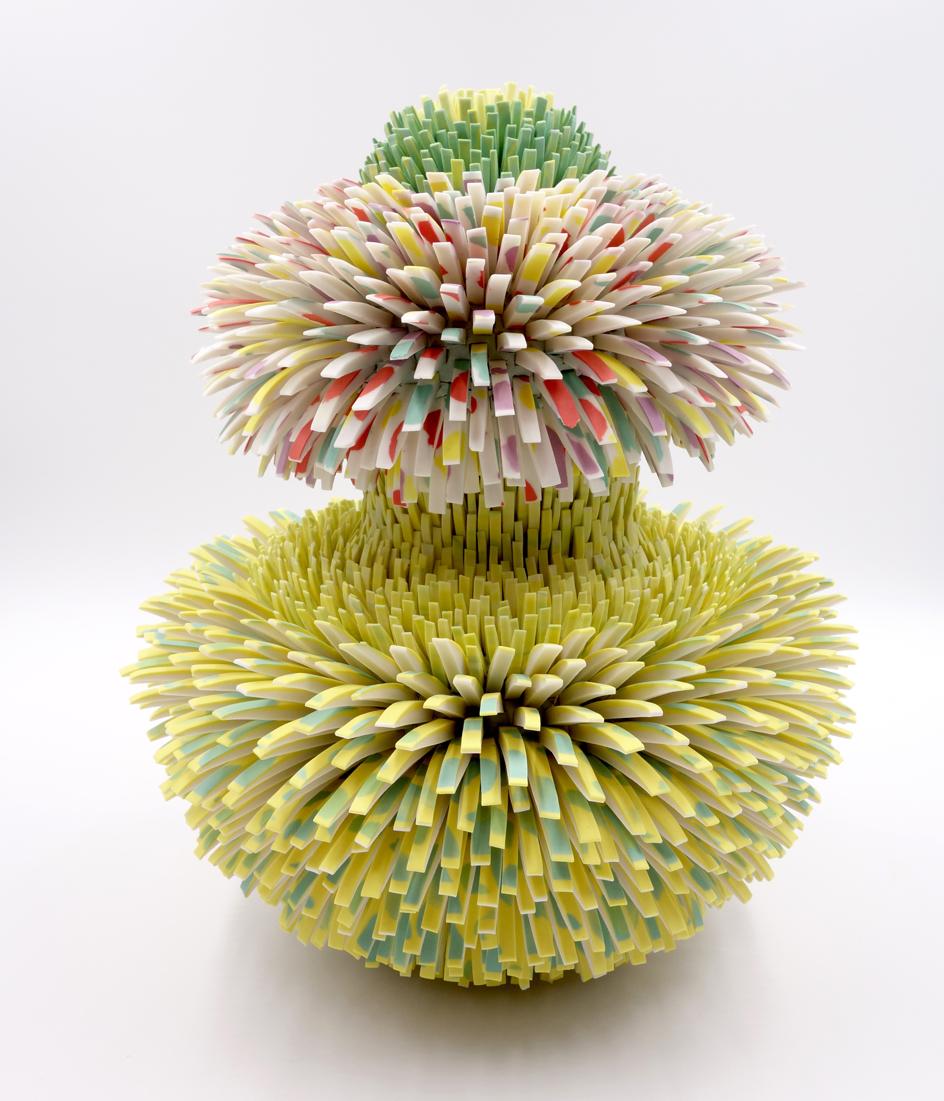
The more you look at Zemer Peled’s work, the more there is to see. The the Israel-born, LA-based artist’s almost impossibly intricate ceramic sculptures are composed of thousands of porcelain shards to form small and large scale objects that resemble organic forms. Each shard is created from strips or slabs of raw or glazed porcelain that she rolls, smashes then affixes to her works. Often taking colour cues from the blue cobalt of Japanese pottery, the artist examines the beauty and brutality of the natural world and delves into themes of memory, identity and place. The resulting works – almost appearing soft from afar, and playful yet ominously spiky up close - resemble something between blooming flora, undulating sea anemones or something entirely abstract.
Writer: Harriet Lloyd-Smith
Magdalene Odundo
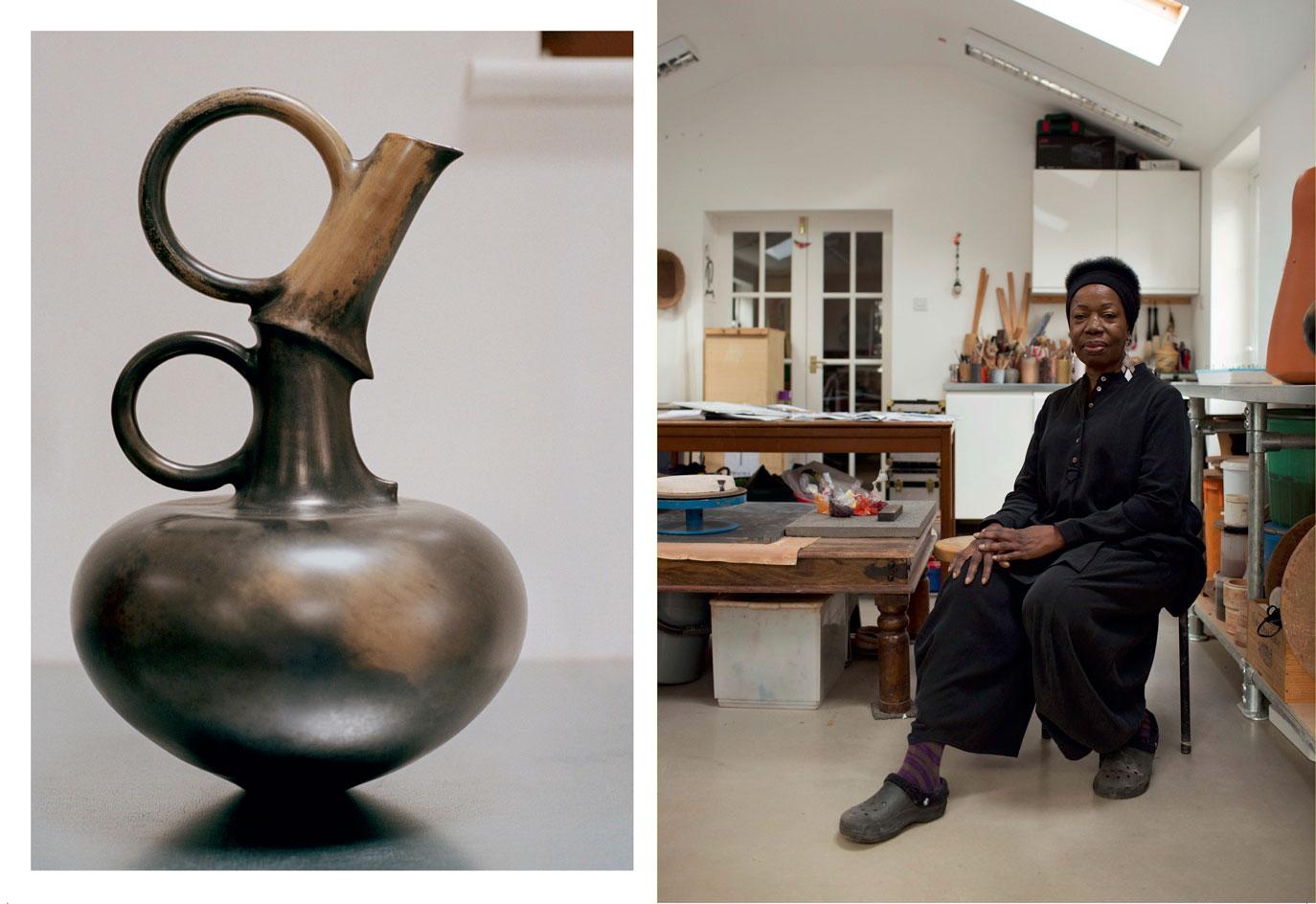
Over a four-decade career, the Kenyan-born British studio potter and revered educator has made a tangible mark on ceramic art. Her restrained, often asymmetrical sculptures allude to the curvature of the female human form and affirm the inextricable and profound link between humanity and clay. As a young ceramic artist, she travelled to Nigeria, New Mexico and China, immersing herself in various approaches to craftsmanship. The artist’s hollow vessels carry a catalogue of global histories, technical approaches and cultures: graphic design - which she first trained in - diasporic identities, British studio pottery, ceremonial vessels from Kenya and Nigeria and Ancient Greek and Roman techniques. In place of the potters’ wheel, Odundo makes use of a coiling technique to hand-build her vessels, which she fires and burnishes repeatedly. The resulting objects have a surface akin to satin, and range in colour from flaming orange to subdued black, and sometimes a combination of the two.
Writer: Harriet Lloyd-Smith
Ai Weiwei
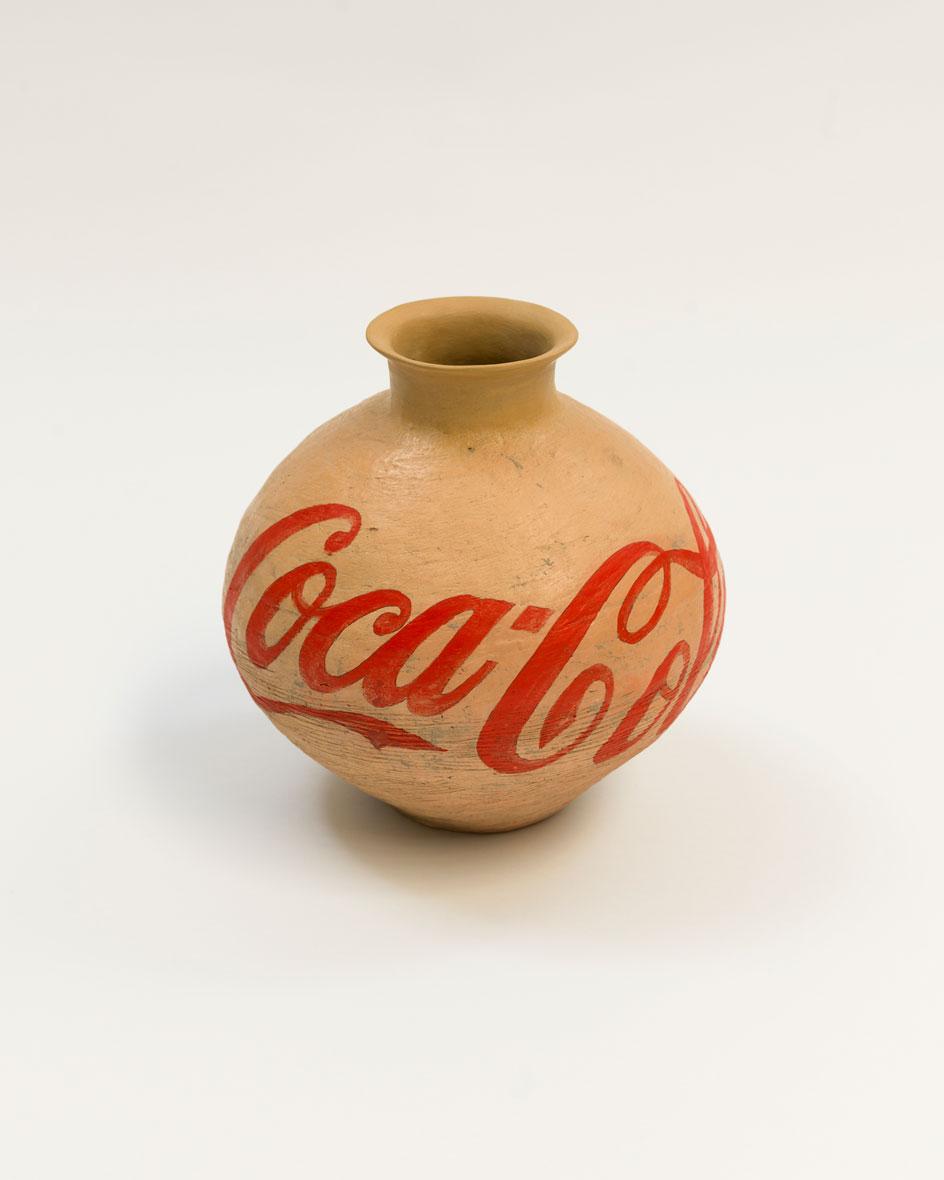
Chinese artist and activist Ai Weiwei is just as famed for breaking ceramic art as making it. In 1995, in one of the most memorable and controversial moments of art-world theatre, he intentionally dropped an alleged 2,000-year-old Han Dynasty Urn, which shattered at his feet. A year before, Ai painted over another with the red Coca-Cola logo. This erasure of artefacts – and ergo cultural history - is a recurring theme in Ai’s work, with ancient ceramic vessels often his tools of choice to question who or what ascribes cultural value. In a different, but no less striking ceramic mode, Ai dominated Tate’s turbine hall with 100 million individually hand-crafted life-sized sunflower seeds sculpted and painted by specialists in Jingdezhen, China. It was an invitation to reflect on the ‘Made in China’ phenomenon, and more broadly, contemporary cultural exchange. Ai confronts the vast history of ceramic art, smashes it open and pieces it back together to astonishing, and explosive effect.
Writer: Harriet Lloyd-Smith
Grayson Perry
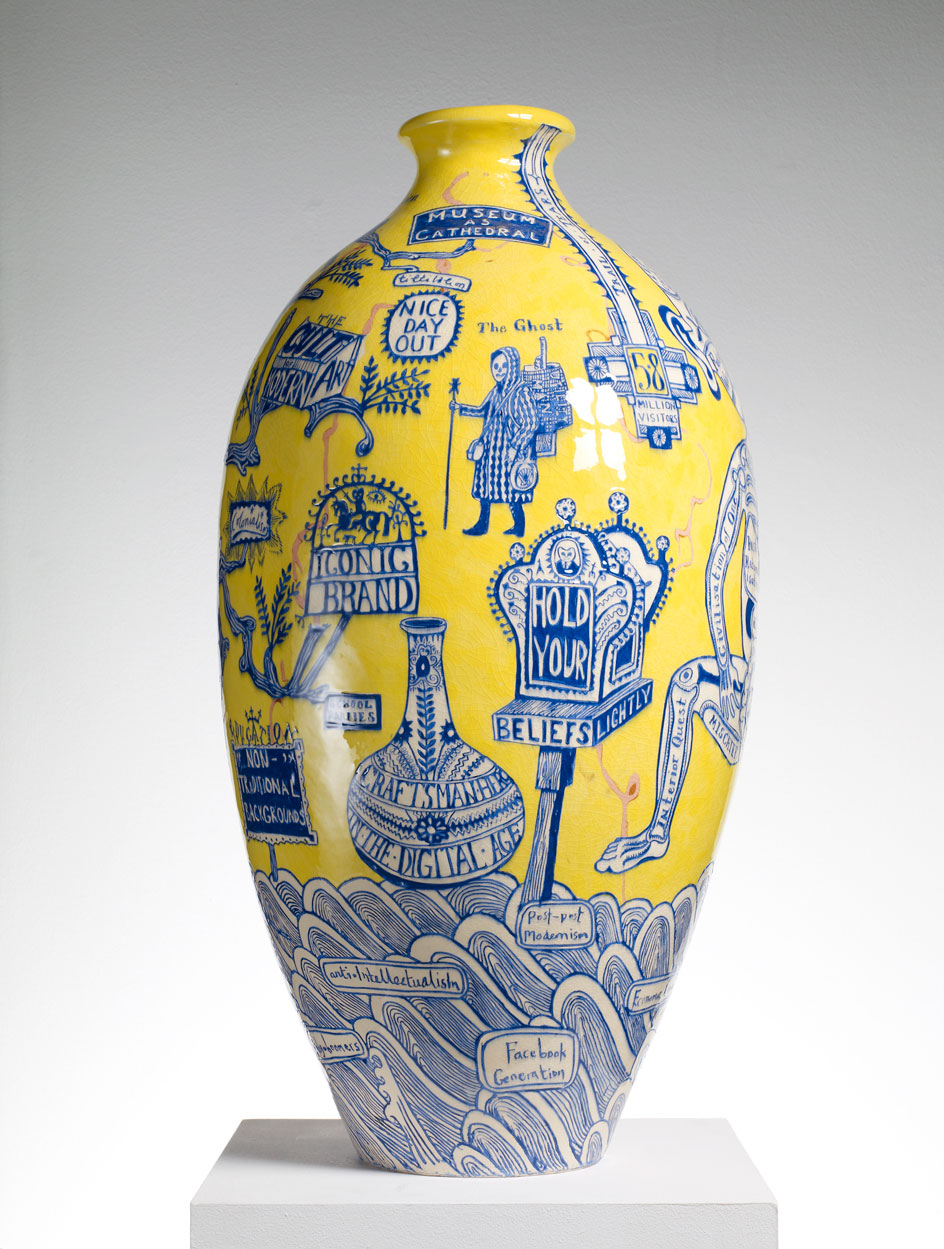
A mere whisper of the term ‘ceramic art’ is usually enough to bring Grayson Perry’s work into the conversation. The artist’s command of the medium as a storytelling device is nonpareil, chronicling scenes of contemporary British life with wit, poignancy and nostalgia. At first glance, these pieces are alluring, playful and spirited. A closer inspection often brings with it a change in mood, as his sgraffito surfaces reveal loaded stories of prejudice, injustice, desire, disaster, religion, mass media and power. His work – which also extends across cast iron, bronze and printmaking – is dense with autobiographical references and unflinching societal statements. Perry simultaneously flips ceramics on its head to question the social status of the medium itself – turning its purity into a vehicle for fiery allegory.
Writer: Harriet Lloyd-Smith
Genesis Belanger

In the work of Brooklyn-based sculptor Genesis Belanger, nothing is quite what it seems. Demure pastel hues and mundane objects are skewered with sharp wit and cultural critique - ingredients that make for uncanny visual consumption. Unlike many ceramic artists, Belanger eschews glazes in favour of a matte surface. Colours use either the natural tones of the clay or involve blending pigments into the stoneware or porcelain. Often involving mid-century furniture, pills, food, telephones, candles, flowers and displaced body parts, Belanger’s ceramic compositions are smorgasbords of surprise and conceptual depth. Each piece is packaged like a surreal novella, bound up in contemporary realism: feminist critiques of contemporary America, vanity, excess, consumerism, and in a 2020 show at The Aldrich, grief and loss.
Writer: Harriet Lloyd-Smith
Theaster Gates
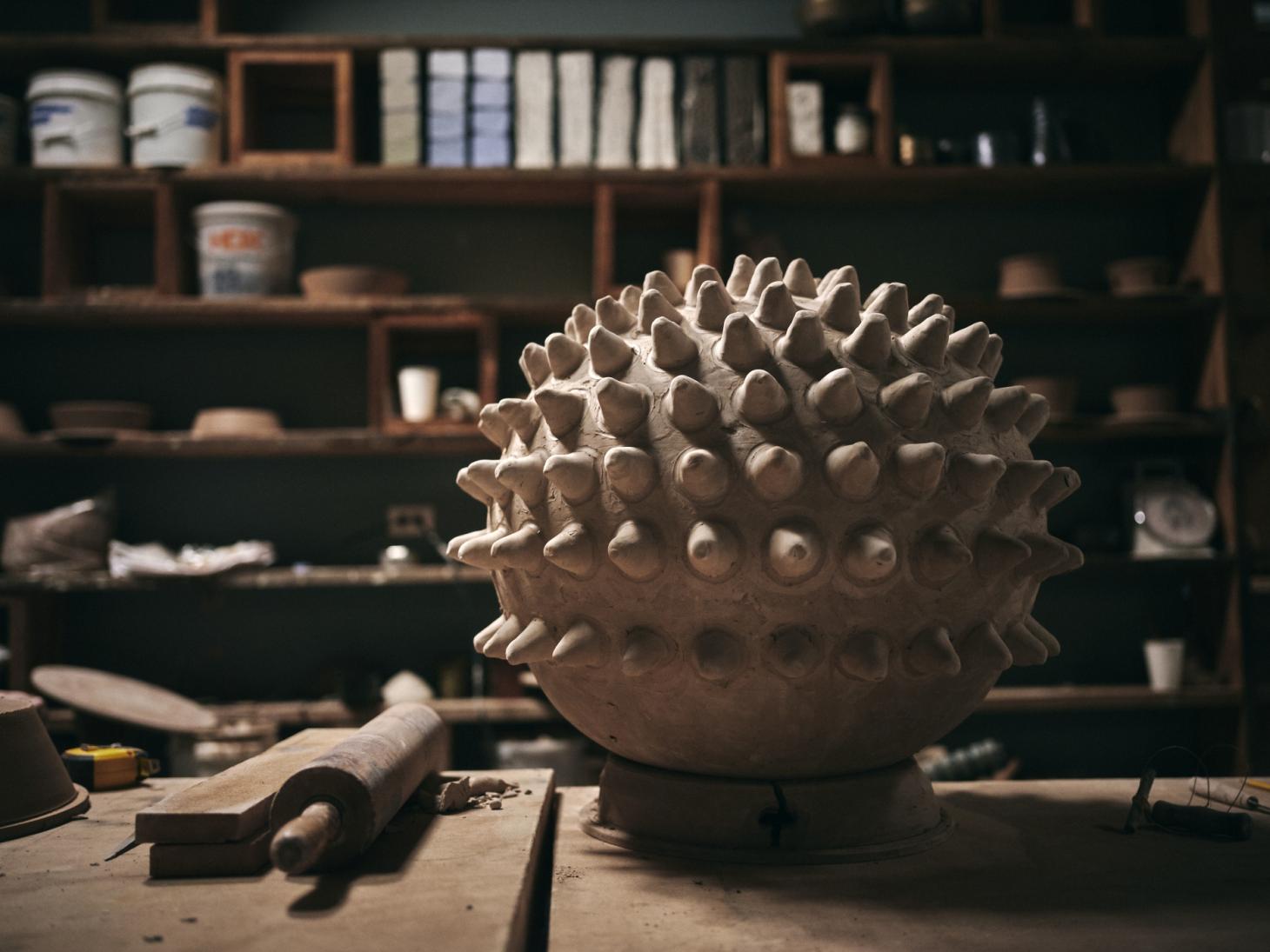
American artist Theaster Gates has a practice of many facets. Through his socially-engaged art, Gates delves into race, territory, and the history of objects. He trained as a potter, and maintains a deep affinity with clay. For Gates, the ceramic vessel is rooted in metaphor: a container of spirituality, ritual and universality, and architecture for shared experiences. Last year, Gates staged ‘Black Vessel’ at Gagosian New York, in which he created a space for contemplation through large-scale works in glazed and fired clay. The artist’s ability to unify age-old traditions and ceramic sensitivities with contemporary themes and aesthetics anchors him as a forerunner of contemporary ceramic art, and a great deal more. Read a full interview with Gates for our At Home With series.
Lubna Chowdhary
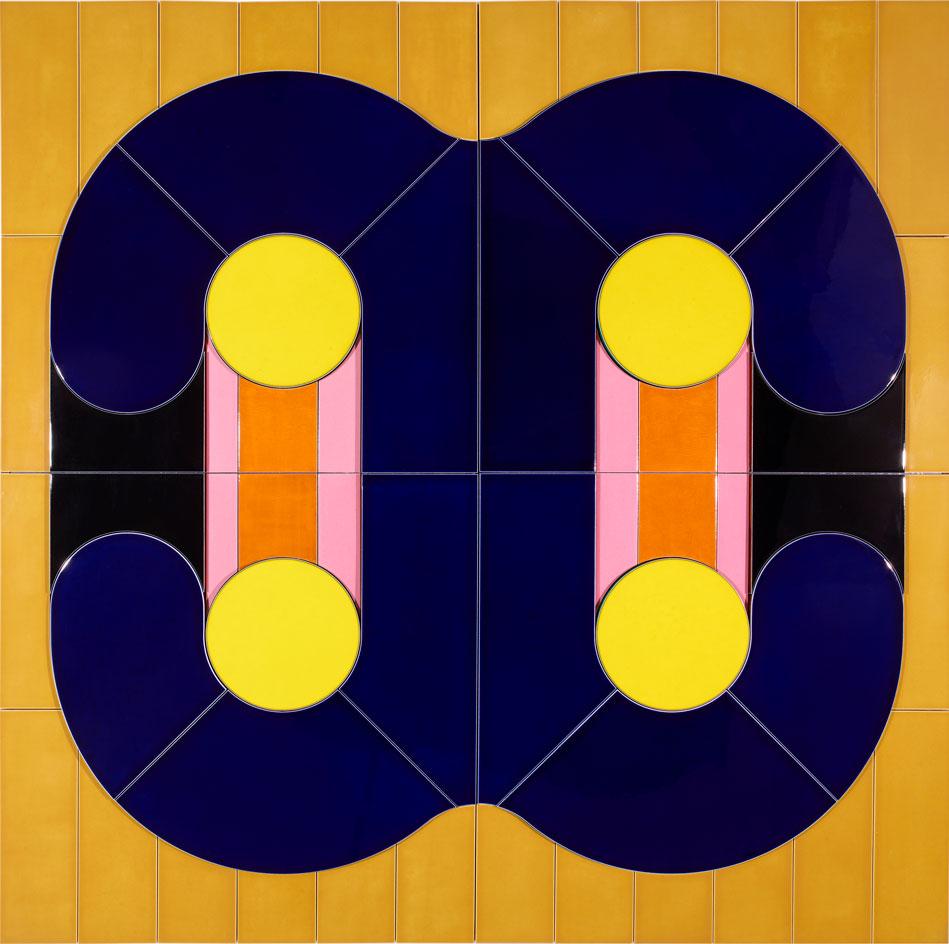
The work of London-based artist Lubna Chowdhary is all about tensions and hybridity: between manual and industrial, East and West, minimalism and superfluity. Born in Tanzania to Indian parents, the artist creates vivid hand-painted tiles, three-dimensional objects and spacial installations that defy easy categorisation. Chowdhary’s interests lie in the malleability of clay, its relationship with the human hand and colour’s capacity to generate visual and emotional responses. Through her bold lashings of colour, lustrous surfaces and gridlike geometric constructions, the medium is imbued with wide-ranging histories, geographies and cultures. Her new exhibition at Jhaveri Contemporary in Mumbai centres on the concept of code-switching, the act of shifting between linguistic codes and systems. This, in the context of Chowdhary’s work, means an interchange between different modes of production, cultural references and media, conveyed through tiled ceramic work, paintings and collages on paper.
Writer: Harriet Lloyd-Smith
Zizipho Poswa

The Cape Town-based ceramicist’s titanic totemic works, vividly hued and often of variegated parts, are deeply rooted in her experience as a Xhosa woman. In 2006, Poswa co-founded Cape Town ceramic studio Imiso, a leap that allowed her to translate her training in textile design into the ceramic sphere. Her relatively recent success as an independent artist came after two decades of dedication to clay as a vehicle for expression, and as a business. Her stoneware pieces, ambitious in scale and often composed of different parts, draw on Xhosa rituals and textiles, the water vessels carried by Xhosa women, and African hairstyles. Texture plays a central role in Poswa’s work: course surface treatments are often juxtaposed with silky smooth appendages (or vice versa), and other striking embellishments that bridge the gap between tradition and modernity.
Writer: Harriet Lloyd-Smith







